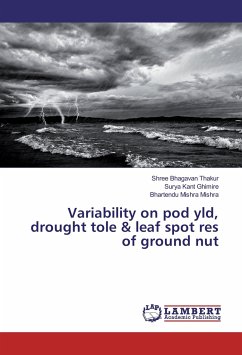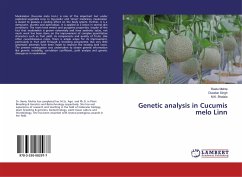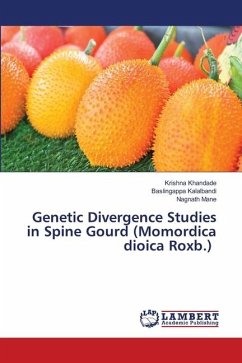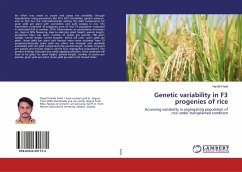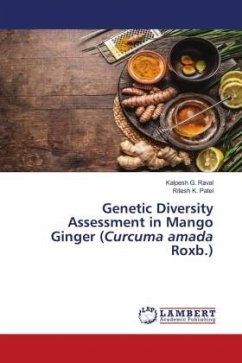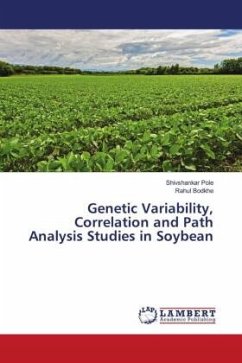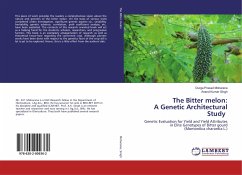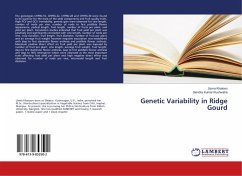
Genetic Variability in Ridge Gourd
Versandkostenfrei!
Versandfertig in 6-10 Tagen
33,99 €
inkl. MwSt.

PAYBACK Punkte
17 °P sammeln!
The genotypes CHFRG-10, CHFRG-22, CHFRG-28 and CHFRG-30 were found to be superior for the most of the yield components and fruit quality traits. High PCV and GCV, heritability, genetic gain were observed for vine length, number of node per vine, number of node to first pistillate flower appearance, pedicel length, fruit length, number of fruits per plant, and yield per plant. Correlation studies indicated that fruit yield per plant was positively and significantly correlated with vine length, number of node per vine, crop duration, fruit length, fruit diameter, number of fruit per plant and an...
The genotypes CHFRG-10, CHFRG-22, CHFRG-28 and CHFRG-30 were found to be superior for the most of the yield components and fruit quality traits. High PCV and GCV, heritability, genetic gain were observed for vine length, number of node per vine, number of node to first pistillate flower appearance, pedicel length, fruit length, number of fruits per plant, and yield per plant. Correlation studies indicated that fruit yield per plant was positively and significantly correlated with vine length, number of node per vine, crop duration, fruit length, fruit diameter, number of fruit per plant and an average fruit weight however negative association was established with days to first staminate flower anthesis and pistillate flower anthesis. Maximum positive direct effect on fruit yield per plant was imposed by number of fruit per plant, vine length, average fruit weight, fruit length, days to first staminate flower anthesis, days to first pistillate flower anthesis and days to 50% emergence which were observed as the most important traits affecting fruit yield per plant and high negative direct effect was observed for number of node per vine, internodal length and fruit diameter.




